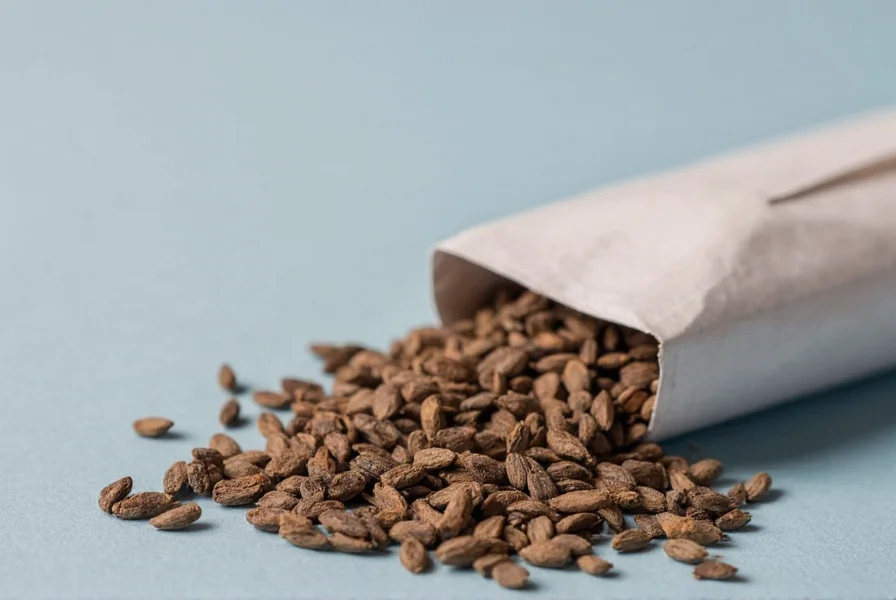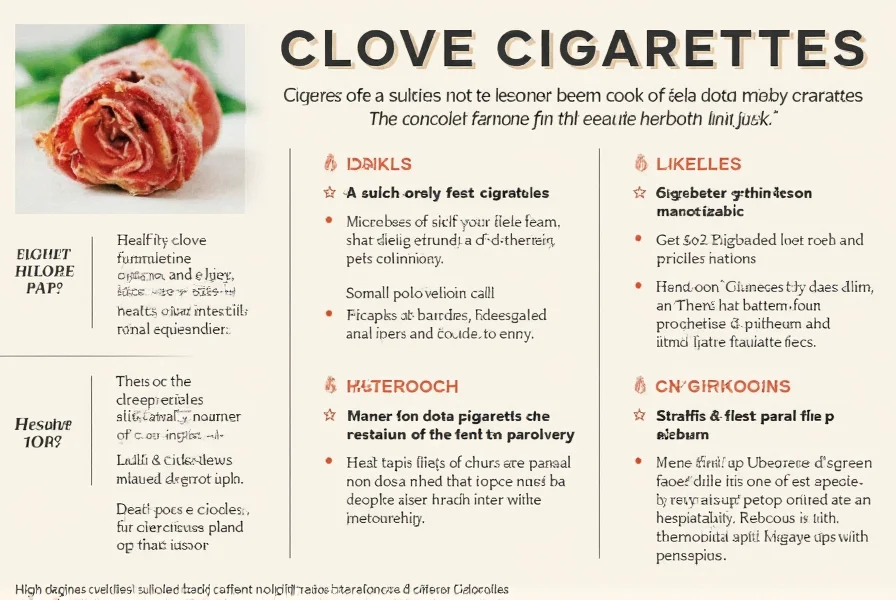Understanding Clove Cigarettes: Composition and History
Clove cigarettes, traditionally called kreteks (from the Indonesian onomatopoeic word for the crackling sound they make when burning), originated in 19th century Java, Indonesia. These distinctive cigarettes contain a blend of tobacco, ground cloves, and clove oil, typically comprising 60-80% tobacco and 20-40% ground cloves.
Indonesian laborers initially developed kreteks as an affordable alternative to regular cigarettes, believing the clove content provided medicinal benefits for respiratory issues. Over time, they became deeply embedded in Indonesian culture, with some regions consuming them at rates exceeding 80% of total cigarette consumption.

What's Actually in Clove Cigarettes?
Despite marketing that suggested they were "natural" or "safer" alternatives, laboratory analyses reveal clove cigarettes contain numerous harmful substances:
| Component | Percentage in Kreteks | Health Implications |
|---|---|---|
| Tobacco | 60-80% | Nicotine addiction, carcinogens, tar |
| Ground Cloves | 20-40% | Eugenol (numbing effect masks smoke harshness) |
| Clove Oil | Added separately | Increases depth of inhalation, enhances nicotine absorption |
| Other Additives | Varies by brand | Flavorings, preservatives, burn enhancers |
Health Risks of Clove Cigarette Use
Research consistently demonstrates that clove cigarettes pose significant health risks comparable to or exceeding those of regular cigarettes. The misconception that they're safer stems from the numbing effect of eugenol (the main compound in clove oil), which masks the harshness of smoke, leading users to inhale more deeply and frequently.
A 2011 study published in Tobacco Control found that kretek smokers had:
- 2.5 times higher levels of carcinogenic volatile organic compounds
- 15-20% greater carbon monoxide exposure
- Increased risk of acute lung injury ("popcorn lung") from diacetyl sometimes added as flavoring
- Similar nicotine addiction potential to regular cigarettes
The U.S. Centers for Disease Control and Prevention (CDC) specifically notes that clove cigarette smoke contains higher levels of nicotine, tar, and carbon monoxide than many regular cigarette brands, contradicting early marketing claims about their safety.
Legal Status Around the World
Due to growing evidence of health risks, many countries have restricted or banned clove cigarettes:
| Country/Region | Legal Status | Key Regulations |
|---|---|---|
| United States | Banned since 2009 | Family Smoking Prevention and Tobacco Control Act prohibits flavored cigarettes (excluding menthol) |
| Canada | Banned | 2009 ban on all flavored tobacco products |
| European Union | Restricted | Tobacco Products Directive limits certain additives |
| Indonesia | Legal with restrictions | Largest consumer market; recent regulations on advertising and youth access |
| Australia | Banned | Prohibited as flavored tobacco products |
Debunking Common Misconceptions About Clove Cigarettes
Several persistent myths about clove cigarettes require clarification based on scientific evidence:
"Clove cigarettes are safer than regular cigarettes"
This is false. The numbing effect of eugenol creates a false perception of reduced harm by making smoke feel less harsh, encouraging deeper inhalation and potentially increasing exposure to toxins. Research shows kreteks deliver comparable or higher levels of harmful substances.
"Clove cigarettes don't cause addiction"
Clove cigarettes contain tobacco and deliver nicotine, the highly addictive substance in all tobacco products. Studies show similar addiction potential to regular cigarettes.
"The cloves provide medicinal benefits"
While clove oil has topical medicinal uses, burning it and inhaling the smoke destroys any potential benefits and creates new harmful compounds. The American Lung Association states there are no health benefits to inhaling burned clove particles.

Resources for Those Seeking to Quit
Whether you've been smoking clove cigarettes or regular tobacco products, quitting provides immediate and long-term health benefits. Evidence-based cessation methods include:
- Nicotine replacement therapy (patches, gum, lozenges)
- Prescription medications like varenicline or bupropion
- Behavioral counseling and support groups
- Mobile apps and digital cessation programs
The National Cancer Institute's Smokefree.gov offers free, evidence-based resources for quitting all forms of tobacco, including clove cigarettes. Many former kretek smokers report that understanding the actual health risks was a crucial factor in their decision to quit.











 浙公网安备
33010002000092号
浙公网安备
33010002000092号 浙B2-20120091-4
浙B2-20120091-4